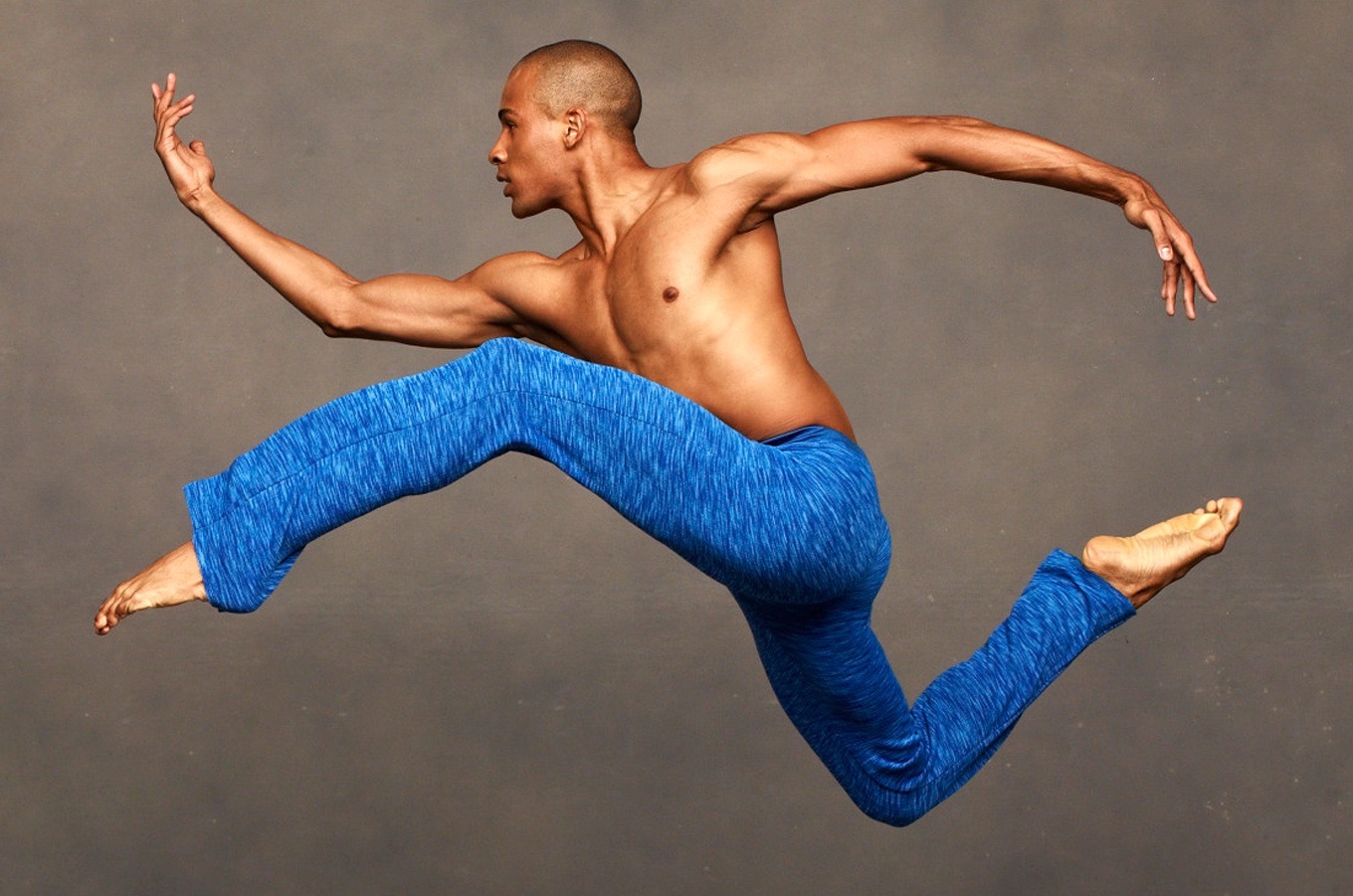Takademe
You asked, and Artistic Director Robert Battle has the answers. In our three-part Facebook Fan Question series, get inside Robert's head and discover his thoughts on choreography, music, artistic leadership, the future of dance, and more.
Part 1: Choreography
Part 3: The Future of Dance & Staying Resilient
Robert Battle on Artistic Leadership

Robert Battle with the Company. Photo by Andrew Eccles
Owen Edwards asks:
What draws your attention to a dancer in an audition room? What qualities capture your eyes first? Also, what makes you turn your eye away from a dancer in the audition room?
I really look for a dancer that has the technical proficiency to do what they are asked to do, of course. But I also try to look at a dancer, like Alvin Ailey said, that can express what is strange and different and unique, or even ugly, about the dance itself. Dancing is a vehicle to express oneself. So if all I see is movement and not the person moving, then that doesn’t interest me. I’m really interested in how this dancer is able to communicate through the movement. This goes back to the notion that we do all of this to speak to one another. So if the only thing you can do is execute the steps, then it won’t hold my attention. Sometimes you can draw that out of a dancer, and sometimes that’s just not that dancer’s particular interest. And that’s okay too.
Nicola White asks:
How important is it to keep the Ailey company's past alive as well as combining it with a direction for the future and how do you try and achieve this?
It’s important to keep the past of the Ailey company alive, because the past is the present. I don’t see any distance between then and now. When I think about a great work of art, it endures, and it is timeless. If it was true then, then it is true now, and it speaks to the audience as it speaks to me. The past is not a burden; it’s the reason why we are here in the first place, so I embrace this rich history of this marvelous company. How do I achieve that? By always challenging and engaging the audience, challenging and engaging the dancers, and finding work that falls in line with that mission. And, by certainly remembering the oft repeated quote by Mr. Ailey himself, who said that “Dance comes from the people and should always be delivered back to the people.” Judith Jamison carried that torch, and now I carry it. I try to do things that come from my own instinct and heart, and that’s how I achieve it. But as for the future, the story hasn’t been totally written yet – I’m still living it. So we’ll see. Ask me in 20 years.
Robert Battle on Music

Kirven James Boyd in Robert Battle's Takademe. Photo by Andrew Eccles
Linda Edmonds-Lima asks:
What music genre is your favorite to dance and choreograph to and why?
Generally, I like percussion because it moves me. It’s very much in your face – you have to deal with percussion in a way that’s very immediate and I love that. But I love all types of music, from classical to experimental. For one dance I choreographed, Takademe, the music is very different – it’s set to Indian Kathak rhythms. One time, an audience member said to me, “Your music is everything from Bach to bongos.” I like that! And I find that that is true – different types of music challenge me in different ways. I started as a musician by playing piano when I was very little, so I had an appreciation for music at an early age. So music is really what moves me, but all types.
Alena Dancerchk Logan asks:
When choreographing a dance which comes to you first, the music or the movement?
Usually the music is the catalyst and the movement sort of pours out of that. Generally, I don’t choreograph in silence; it’s a response to a piece of music. And I try not to just imitate the music – I try to add my own voice through the dance as if I were another musician performing the score.
